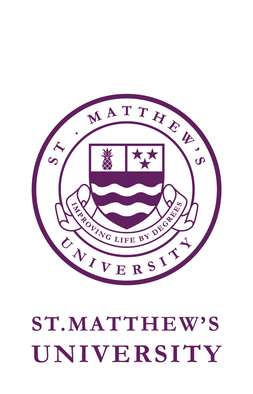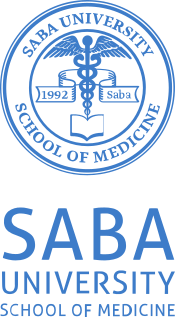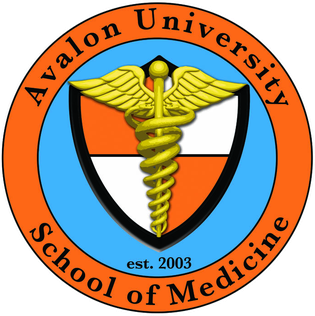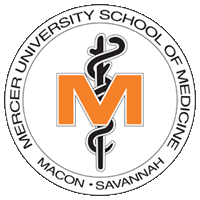Related Research Articles
The Association of American Medical Colleges (AAMC) is a nonprofit organization based in Washington, D.C. that was established in 1876. It represents medical schools, teaching hospitals, and academic and scientific societies, while providing services to its member institutions that include data from medical, education, and health studies, as well as consulting. The AAMC administers the Medical College Admission Test and operates the American Medical College Application Service and the Electronic Residency Application Service. Along with the American Medical Association (AMA), the AAMC co-sponsors the Liaison Committee on Medical Education (LCME), the accrediting body for all U.S. MD-granting medical education programs.
The United States Medical Licensing Examination (USMLE) is a three-step examination program for medical licensure in the United States sponsored by the Federation of State Medical Boards (FSMB) and the National Board of Medical Examiners (NBME). Physicians with a Doctor of Medicine (MD) degree are required to pass the USMLE for medical licensure. However, those with a Doctor of Osteopathic Medicine degree (DO) are required to take the COMLEX-USA (COMLEX) exams.
According to the US Department of Education, the Educational Commission for Foreign Medical Graduates is "the authorized credential evaluation and guidance agency for non-U.S. physicians and graduates of non-U.S. medical schools who seek to practice in the United States or apply for a U.S. medical residency program. It provides comprehensive information and resources on licensure, the U.S. Medical Licensure Examination (USMLE), residencies, and recognition."

Medical education is education related to the practice of being a medical practitioner, including the initial training to become a physician and additional training thereafter.
The United States Medical Licensing Examination (USMLE) Step 1 is a standardized test that assesses a medical student's knowledge of basic science concepts and their application to clinical medicine. The exam is one of three components required for medical licensure in the United States and is typically taken by students after their second year of medical school.
The USMLE-Step 2-CK is the nine-hour-long multiple-choice portion of the second part of the United States Medical Licensure Examination. It assesses clinical knowledge through a traditional, multiple-choice examination. In contrast to the USMLE Step 1, the focus is much more on clinical application of medical knowledge. It assesses the ability to apply medical knowledge, skills, and understanding of clinical science essential for the provision of patient care under supervision. The USMLE Step 2 is generally taken during the 4th year of medical school by U.S. medical students.

St. Matthew's University (SMU) is a private for-profit offshore medical school located in Grand Cayman, Cayman Islands in the Caribbean. SMU has a School of Medicine and a School of Veterinary Medicine, which confer M.D. and D.V.M. degrees, respectively. St. Matthew's University is owned by R3 Education, Inc.

Medical University of the Americas (MUA) is a private for-profit offshore medical school in Charlestown, Nevis. It is owned by R3 Education, Inc. which also owns St. Matthew's University and Saba University School of Medicine MUA confers upon its graduates the Doctor of Medicine (MD) degree.
An international medical graduate (IMG), earlier known as a foreign medical graduate (FMG), is a physician who has graduated from a medical school outside of the country where he or she intends to practice. The term non-local medical graduate may be similarly used in countries with distinct licensing regions within them. Generally, the medical school of graduation is one listed in the World Directory of Medical Schools (WDOM) as accredited by the Foundation for Advancement of International Medical Education and Research or the World Health Organization.

Saba University School of Medicine is a private for-profit offshore medical school located on Saba, a special municipality of the Netherlands in the Caribbean. Saba University confers upon its graduates the Doctor of Medicine (MD) degree. It is owned by R3 Education, Inc. which also owns St. Matthew's University and the Medical University of the Americas
Medical school in the United States is a graduate program with the purpose of educating physicians in the undifferentiated field of medicine. Such schools provide a major part of the medical education in the United States. Most medical schools in the US confer upon graduates a Doctor of Medicine (MD) degree, while some confer a Doctor of Osteopathic Medicine (DO) degree. Most schools follow a similar pattern of education, with two years of classroom and laboratory based education, followed by two years of clinical rotations in a teaching hospital where students see patients in a variety of specialties. After completion, graduates must complete a residency before becoming licensed to practice medicine.
Most physicians in the United States hold either the Doctor of Medicine degree (MD) or the Doctor of Osteopathic Medicine degree (DO). Institutions awarding the MD are accredited by the Liaison Committee on Medical Education (LCME). Institutions awarding the DO are accredited by the Commission on Osteopathic College Accreditation (COCA). The World Directory of Medical Schools lists both LCME accredited MD programs and COCA accredited DO programs as US medical schools. Foreign-trained osteopaths do not hold DO degrees and are not recognized as physicians in the United States or in other jurisdictions.

Ross University School of Medicine (RUSM) is a private medical school. Its main campus is located in Barbados, and administrative offices are located in Miramar, Florida, in the United States. Prior to 2019, the university's main campus was in Portsmouth, Dominica but moved to its present location in Barbados in January 2019. RUSM is owned by Adtalem Global Education Inc.
The American University of Integrative Sciences (AUIS), is a private for-profit offshore medical school with a single campus located in Barbados. Founded in 1999, it was formerly known as the University of Sint Eustatius School of Medicine (USESOM). For a period, the school was based in Sint Maarten, where it was taken over by IEMR LLC, a US-based company. Since October 2017, AUIS has operated in Barbados, and it is currently a candidate for accreditation by the Caribbean Accreditation Authority for Education in Medicine and other Health Professions (CAAM-HP).
Saint James School of Medicine (SJSM) is a private for-profit offshore medical school with two basic science campuses, one in British Overseas Territory of Anguilla, and the other in Saint Vincent and the Grenadines, it is considered one school with two campuses. Saint James confers upon its graduates the Doctor of Medicine (M.D.) degree.
The National Board of Medical Examiners (NBME), founded in 1915, is a United States non-profit which develops and manages assessments of health care professionals. Known for its role in developing the United States Medical Licensing Examination (USMLE) in partnership with the Federation of State Medical Boards (FSMB), USMLE examinations for medical students and residents are used by medical licensing authorities in the U.S. to help determine qualifications to grant and recognize medical licenses. NBME also creates assessments and materials that are used by medical students, medical educators, practicing physicians, and for state testing of physicians already holding licenses.
The Caribbean Accreditation Authority for Education in Medicine and other Health Professions (CAAM-HP) is an accrediting body for the education programmes and schools of medicine, dentistry, veterinary medicine, nursing and other health professions in the 15 member nations of the Caribbean Community (CARICOM). CAAM-HP was established in 2003 and is headquartered in Kingston, Jamaica.

Avalon University School of Medicine (AUSOM) is a private medical school located in Willemstad, Curaçao, in the Caribbean. AUSOM confers upon its graduates the Doctor of Medicine (MD) degree. Administrative offices for the university are located in Youngstown, Ohio.

Mercer University School of Medicine (MUSM) is the graduate medical school of Mercer University and a component of the Mercer University Health Sciences Center. It was founded in 1982 in Macon, Georgia, United States, and in 2008 opened a second campus in Savannah, Georgia with either site allowing students to complete all four requisite years of medical training. In 2012 MUSM developed a third site in Columbus, Georgia at which students could elect to complete their third and fourth years of training. In 2021, the Columbus transitioned to a full four-year campus.

Trinity Medical Sciences University is an offshore private medical school with its Basic Science part of the MD program, Pre-medical program and Masters program located in Saint Vincent and the Grenadines in the Caribbean and Clinical Science part of the MD program in Warner Robins, GA in the United States. It opened in 2008, as a fully accredited medical facility to respond to a shortage of physicians in the United States and Canada. It has its administrative headquarters in Roswell, Georgia and it partners with Milton Cato Memorial Hospital located in Kingstown and Northwest Hospital in Baltimore.
References
- 1 2 3 4 5 "Offshore Education in the OECS, By Swedish Development Advisers AB, The World Bank" (PDF). September 2004.
- 1 2 3 4 Sheldon Mclean (January 2018). "A global value chain analysis of offshore medical universities in the Caribbean". Studies and Perspectives. United Nations. ISSN 1728-5445 . Retrieved 15 May 2021.
- 1 2 Parolini, Antonella; Platek, Cindy (June 2010). "Offshore Medical Schools in the Caribbean". Credential Evaluators, World Education Services. 23 (5).
- 1 2 3 4 5 N. Lynn Eckhert (April 2010). "Perspective: Private Schools of the Caribbean: Outsourcing Medical Education". Academic Medicine. 85 (4): 622–630. doi: 10.1097/ACM.0b013e3181d2aee1 . PMID 20354377.
- ↑ Eckhert, N. Lynn (2010). "Perspective: Private Schools of the Caribbean: Outsourcing Medical Education". Academic Medicine. 85 (4): 622–630. doi: 10.1097/ACM.0b013e3181d2aee1 . PMID 20354377.
- ↑ "Clinical Schools" . Retrieved 15 May 2021.
The offshore clinical school of Ochsner...
- ↑ "Offshore Medical Schools Presentation and Panel Discussion — Hunter College".
- 1 2 "Overview – Caribbean Accreditation Authority for Education in Medicine and Other Health Professions".
- ↑ van Zanten Marta; Boulet John R (2008). "Medical Education in the Caribbean: Variability in Medical School Programs and Performance of Students". Academic Medicine. 83 (10): S33–S36. doi: 10.1097/ACM.0b013e318183e649 . PMID 18820496.
- ↑ "Agencies with Recognition Status - World Federation for Medical Education".
- ↑ "Accreditation Commission on Colleges of Medicine".
- ↑ Stephen M. Boreman (16 January 2017). "Accreditation of Foreign Medical Schools in California" . Retrieved 7 May 2021.
- ↑ "NYS Medicine:Application Forms". www.op.nysed.gov. Retrieved 9 May 2021.
- ↑ "Find the Best Medical Schools".
- ↑ "'It's Tough to Get Out': How Caribbean Medical Schools Fail Their Students". The New York Times. 29 June 2021.
- ↑ van Zanten Marta; Boulet John R (2011). "Medical Education in the Caribbean: A Longitudinal Study of United States Medical Licensing Examination Performance, 2000–2009". Academic Medicine. 86 (2): 231–238. doi: 10.1097/ACM.0b013e3182045efe . PMID 21169783.
- ↑ Students From Caribbean Med Schools Head for New York, Angering Some Local Programs, By Katherine Mangan, The Chronicle of Higher Education, December 12, 2010, http://chronicle.com/article/Students-From-Caribbean-Med/125681/
- ↑ U.S. Government Accountability Office. Foreign Medical Schools: Education Should Improve Monitoring of Schools That Participate in the Federal Student Loan Program. http://www.gao.gov/new.items/d10412.pdf. Accessed March 11, 2013.
- ↑ Korcok M (1997). "After rejection in Canada, more Canadians pursuing career dreams at offshore medical schools". CMAJ. 156 (6): 865–7, 870. PMC 1227058 . PMID 9084396.
- ↑ Stanley M. Kozakowski; Alexandra Travis; Ashley Bentley; Gerald Fetter Jr. "Entry of US Medical School Graduates Into Family Medicine Residencies: 2015–2016". stfm.org. Society of Teachers of Family Medicine. Retrieved 11 April 2021.
- ↑ Duvivier, Robbert J.; Wiley, Elizabeth; Boulet, John R. (2019). "Supply, distribution and characteristics of international medical graduates in family medicine in the United States: a cross-sectional study". BMC Family Practice. 20 (1): 47. doi: 10.1186/s12875-019-0933-8 . PMC 6441164 . PMID 30927914.
- ↑ Duvivier, R. J.; Wiley, E.; Boulet, J. R. (2019). "Table 4 Medical School Attended for Practicing IMGs in Family Medicine (top 15)". BMC Family Practice. 20 (1): 47. doi: 10.1186/s12875-019-0933-8 . PMC 6441164 . PMID 30927914.
- ↑ Amy Keller (7 April 2022). "Filling the doctor gap will require a range of responses". floridatrend.com. Retrieved 18 April 2022.